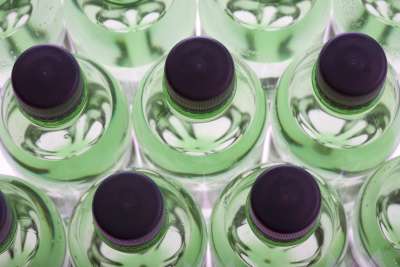Water Storage – 5 Common Mistakes You Should Avoid
 One of the first things that people think of when preparing for a disaster situation is storing water. Water is extremely crucial if you want to survive. A person can survive three weeks without food but only three days without water. Although water storage is forefront in many a prepper's mind, there are five common mistakes that many make. The amount you store, where you store it, how long you store it, what you store it in, and the condition of the water are things you need to be mindful of when you store your water.
One of the first things that people think of when preparing for a disaster situation is storing water. Water is extremely crucial if you want to survive. A person can survive three weeks without food but only three days without water. Although water storage is forefront in many a prepper's mind, there are five common mistakes that many make. The amount you store, where you store it, how long you store it, what you store it in, and the condition of the water are things you need to be mindful of when you store your water.
1. The amount you store
The recommended amount to store water is one gallon a day per person. But when you factor in cooking, hygiene needs, sanitation and increased activity levels, the amount should be closer to two gallons a day per person. If you have pets, remember to store water for them too.
2. Where you store it
Heat and sunlight can shorten the shelf life of water. If you store your water in a garage or a shed – don't.
Keep your water in a cool dark place, like a basement or even under your bed.
3. How long you store it
Water can go bad. Algae and bacteria can grow in water, even if it is treated. Rotate or replenish your water every six months to one year. If you use a commercial water preserver, then it is five years.
4. What you store it in
Don't store your water in used milk or juice jugs. The proteins and fruit sugars embedded in the plastic is a perfect breeding ground for bacteria. A better “free” container would be a 2 liter soda bottle. Just be sure to sanitize it first.
5. The condition of the water
If you get your water from a well, don't just put the water in a storage container and think that you're done. Add two drops of non-scented bleach per gallon of water. This will kill any bacteria that might be harboring in the water.
With these common mistakes avoided, you will be sure to have a good water supply at a time where you need it most.
In case you missed it, here is the link to the post about water storage: http://www.homereadyhome.com/2013/04/19/do-you-make-these-5-water-storage-mistakes/
What are some tips and tricks that you have learned about water storage? Let us know and share your knowledge!
Are you liking, following & pinning? Connect with our pages, boards & feeds.







Never store any water containers (packages of bottled water, 2 liter bottles, etc) directly on concrete like your basement floor. The chemicals in the concrete will leech through the packaging and plastic containers and give the water a bad taste. Always use a wooden or plastic pallet or sit the water on a shelf.
Also, if you treat the water with bleach prior to storage, you can get the bleach or chlorine taste out by pouring it back and forth between two pitchers or buckets or by stirring it vigorously before consumption.
We tend to go through plastic vinegar bottles reasonably quickly. I usually put Berkey-purified water right in the empties, sometimes without even rinsing. Will the vinegar traces help to keep the water pure?
We recommend purifying the water through the Berkey Systems when you need to use the water, as we have not heard of vinegar being an acceptable water treatment for long term storage.
If water is stored in plastic juice bottles can water be boiled before use to make it safe
If you are going to store water in plastic juice bottles, you can purify the water by putting it into your Berkey System.
Though we recommend people store water inside of other containers.